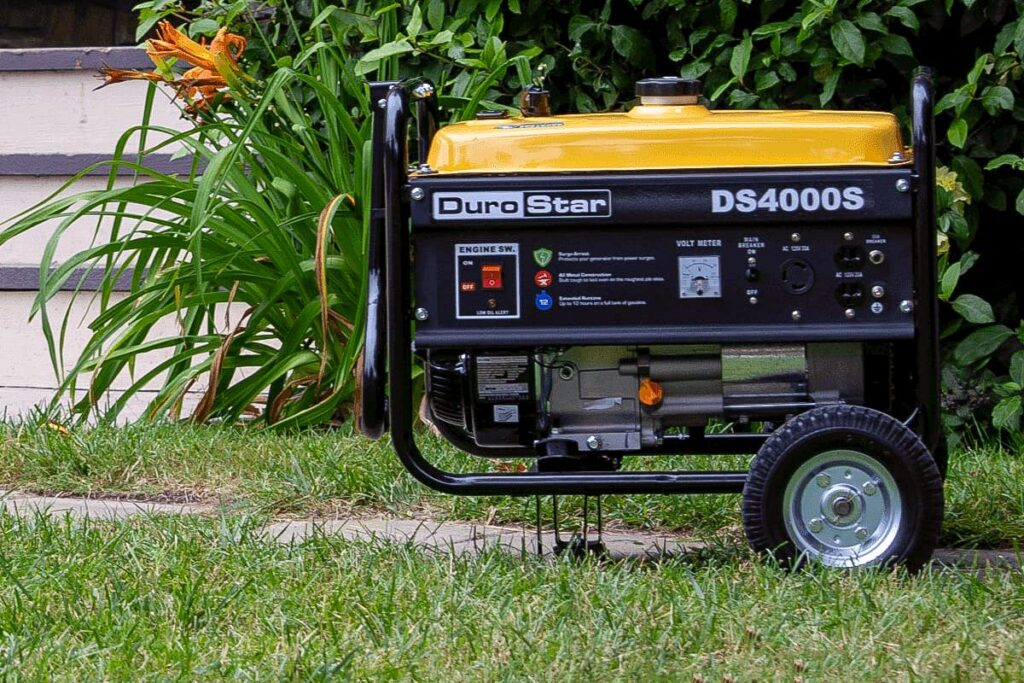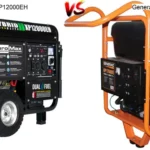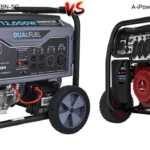Introduction: Generators come in all shapes and sizes – from small portable units to large industrial units. Whether you’re looking for a generator for camping, home backup, or industrial use, there are many options available. In this article, we’ll explore the best generators for your needs, with reviews, buying guides, and how-to’s.
Types of Generators

1. Portable Generator
A portable generator is a small engine that can be used to generate electricity in case of emergency or to power tools and equipment outdoors. Portable generators are generally smaller and more affordable than standby generators, but they do require manual setup and regular maintenance.
2. Standby Generator
A standby generator is a larger, more expensive generator that is permanently installed on a property and connected to the electrical system. Standby generators are great for larger homes or businesses that need a reliable source of power during an outage.
3. Inverter Generator
An inverter generator is a type of generator that produces clean electricity for powering sensitive electronics. Inverter generators are more efficient than traditional portable generators and run quieter. They are also more expensive, but the additional cost is worth it if you need to power sensitive equipment.
Factors to Consider when Choosing a Generator
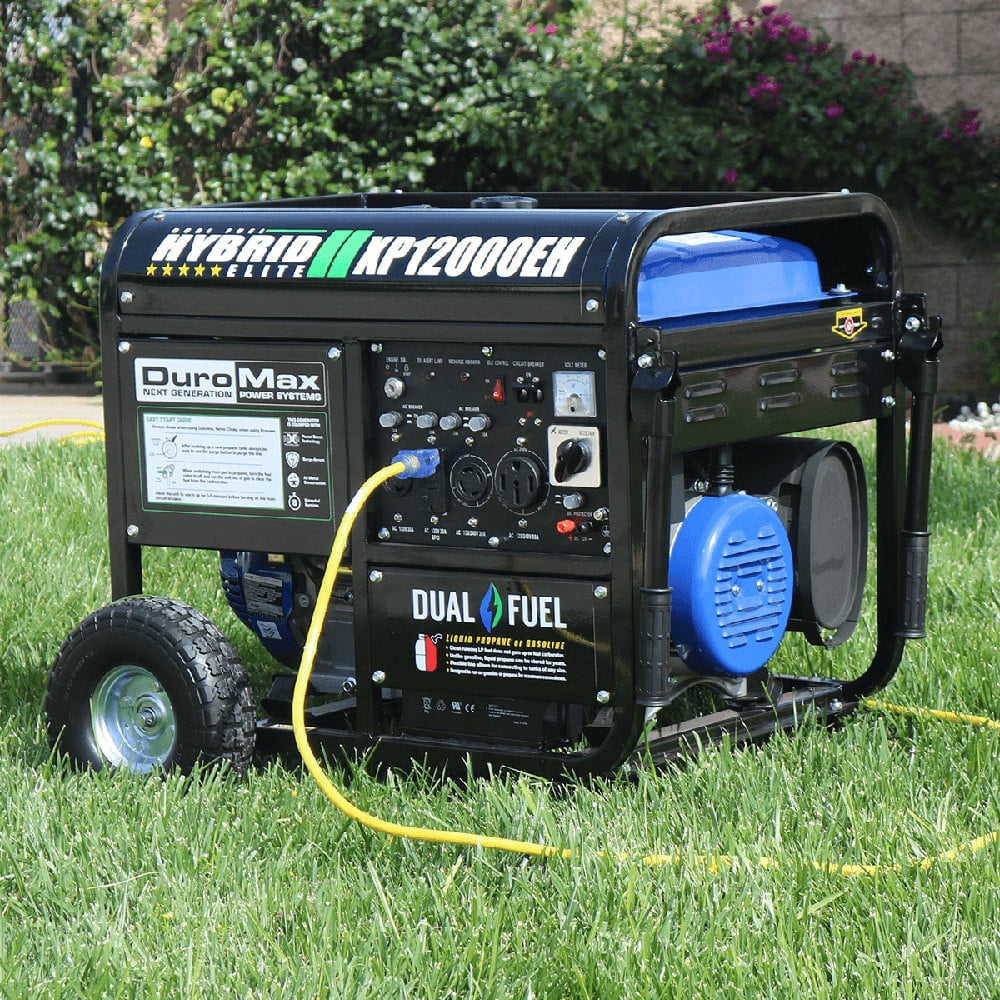
1. Power Output
The amount of power a generator can supply is one of the most important considerations when selecting a generator. Generators are typically rated in watts and the amount of power needed for a particular task depends on the type and number of appliances and tools you plan to use.
2. Fuel Type
Generators run on either gasoline, diesel, or propane. Gasoline is the most common fuel source and is generally available from most service stations. Diesel and propane are less common and may require special storage and maintenance.
3. Size and Weight
If you plan to transport your generator, you should consider the size and weight of the unit. Smaller and lighter models are more convenient to move, but may not be able to handle the same amount of power as larger and heavier models.
4. Noise Level
Noise level is a major concern for many people. Generators can be noisy, so it is important to consider the noise level of the generator you are considering. Some models are designed to be quieter than others, so you should consider whether you need a quiet generator or not.
5. Cost
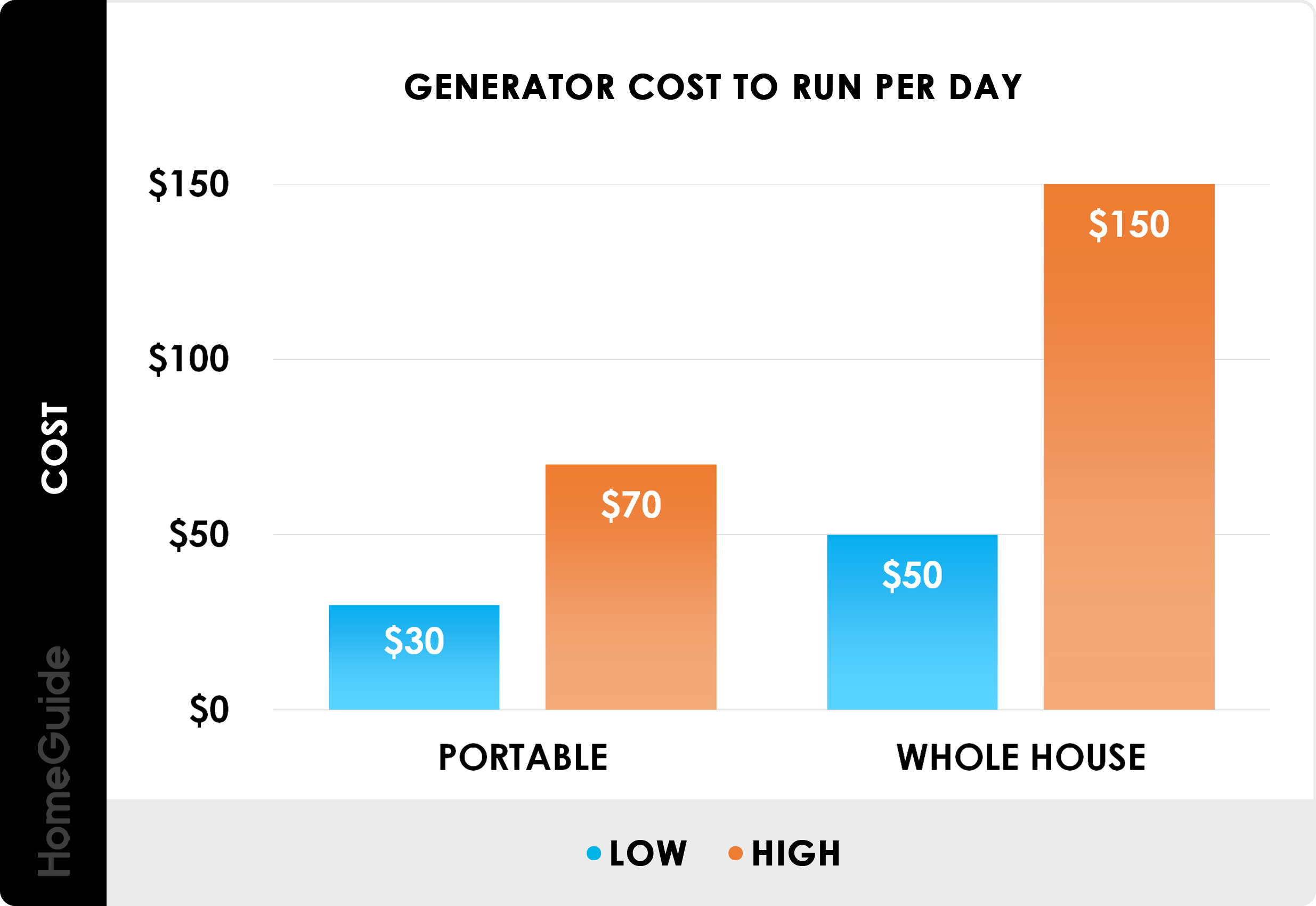
Generator costs vary depending on the size, type, and usage of the generator. Portable generators are typically cheaper than standby generators and can range from a few hundred dollars to several thousand. Standby generators are generally more expensive and can range from about $2,000 for a basic model to upwards of $25,000 for a larger, more powerful model. Installation costs for standby generators are also typically more expensive than for portable generators. Additionally, standby generators require more ongoing maintenance and fuel costs than portable generators.
When comparing generator costs, it is important to consider all associated costs including purchase price, installation, fuel, and maintenance. Knowing the total cost of ownership over time can help you determine the best generator for your needs.
Reviews of the Top Generators

Having a reliable source of power is essential for a variety of tasks, from powering a job site to providing backup power to your home. Generators come in a wide range of sizes and capabilities, so it is important to choose the right one for your needs. To help you make a decision, here are reviews of some of the top generators on the market:
- Honda EU2200i Generator – This quiet and lightweight generator is perfect for camping, tailgating, and other outdoor activities. It is also an excellent choice for those who need backup power for their home. The generator has a 2200 watt maximum output and a run time of up to 8.1 hours on a single tank of gas. It also features a built-in fuel gauge and an automatic low-oil shutoff.
- Briggs & Stratton P4500 PowerSmart Generator – This generator is perfect for those who need a reliable and powerful source of power. It has a 4500 watt maximum output and can run for up to 8 hours on a single tank of gas. It also features a built-in fuel gauge and a low-oil shutoff. The generator is also easy to transport, thanks to its compact design and convenient carrying handle.
- Westinghouse WGen7500 Generator – This generator is perfect for those who need a powerful and reliable source of power. It has a 7500 watt maximum output and can run for up to 16 hours on a single tank of gas. It also features a built-in fuel gauge and a low-oil shutoff. The generator is also easy to move, thanks to its wheel kit and convenient folding handle.
- Champion 3400-Watt Dual Fuel Generator – This generator is perfect for those who need a powerful and reliable source of power. It has a 3400 watt maximum output and can run for up to 14 hours on a single tank of gas. It also features a built-in fuel gauge and a low-oil shutoff. The generator is also easy to transport, thanks to its compact design and convenient carrying handle.
- DuroMax XP12000EH Generator – This generator is perfect for those who need a powerful source of power. It has a 12000 watt maximum output and can run for up to 20 hours on a single tank of gas. It also features a built-in fuel gauge and a low-oil shutoff. The generator is also easy to move, thanks to its wheel kit and convenient folding handle.
1. Honda EU2200i

- The Honda EU2200i is a versatile and reliable generator that is perfect for a variety of uses. It is powerful, lightweight and efficient, and is capable of powering everything from small home appliances to large motorhomes.
- This generator has a reliable 2200-watt output and a fuel-efficient engine that runs up to 8.1 hours on a single tank of gas. It also has a convenient electric start and an Eco-Throttle system that adjusts the engine speed to match the load for maximum fuel efficiency.
- The Honda EU2200i is also incredibly quiet, with noise levels as low as 51 dB. This allows it to be used in a variety of settings without disturbing the neighbors. It also has a number of safety features such as an overload protection, low oil shut-off and a spark arrestor.
- Overall, the Honda EU2200i is an excellent choice for anyone looking for a reliable and efficient generator. It is easy to use, powerful, fuel-efficient and quiet, making it a great choice for a variety of applications.
2. Westinghouse WGen7500
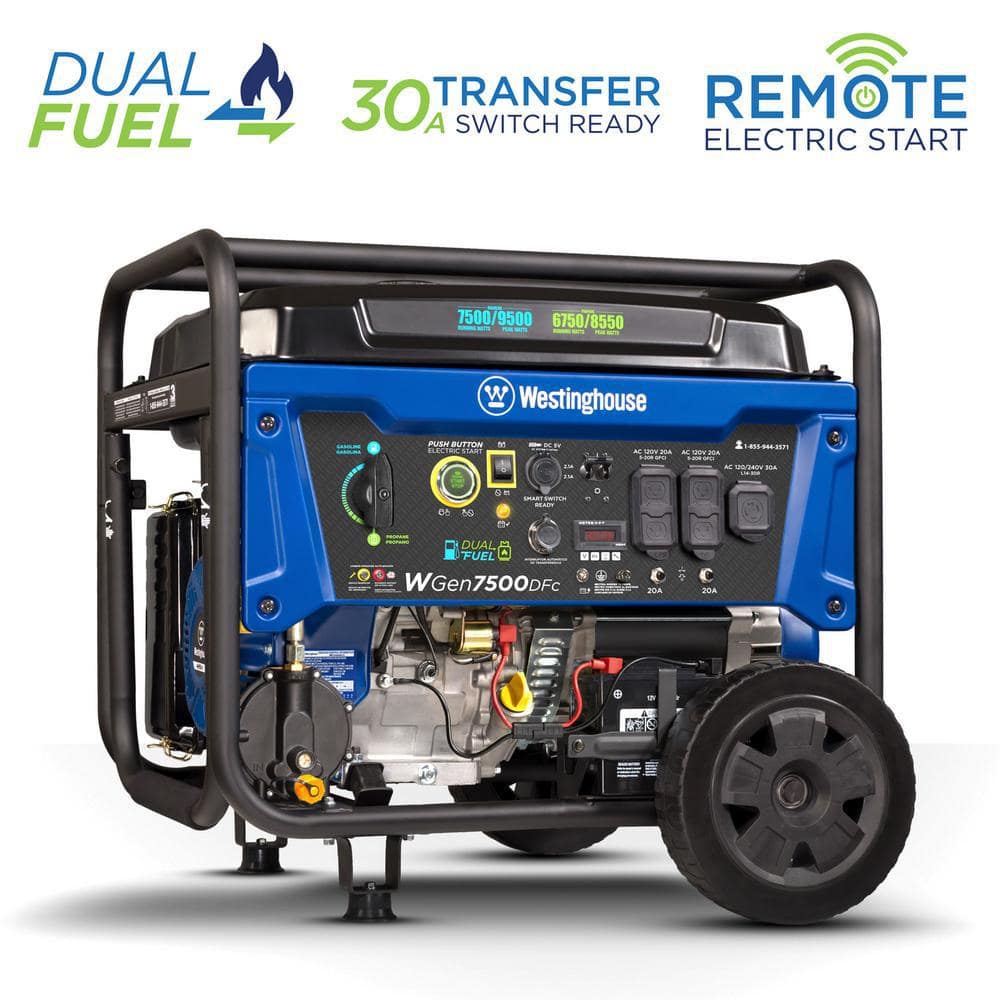
The Westinghouse WGen7500 is one of the top generators on the market due to its high-quality construction and reliable performance. It comes in a convenient, portable design with a large fuel tank capacity, making it a great choice for homeowners who need a generator for emergency power outages or recreational activities. It has a powerful 420cc engine and 9500 rated watts and 12500 peak watts, so it can easily power essential household appliances. It also features a low-oil shutdown system, electric start, and an easy-to-read digital display, making it easy to monitor the generator’s performance.
- Powerful 420cc engine
- 9500 rated watts and 12500 peak watts
- Low-oil shutdown system, electric start
- Easy-to-read digital display
- Convenient, portable design
- Large fuel tank capacity
The Westinghouse WGen7500 is a great choice for those who need reliable power without sacrificing portability or convenience. Its impressive performance and features make it a top generator for any home or recreational activity.
3. Generac 7043
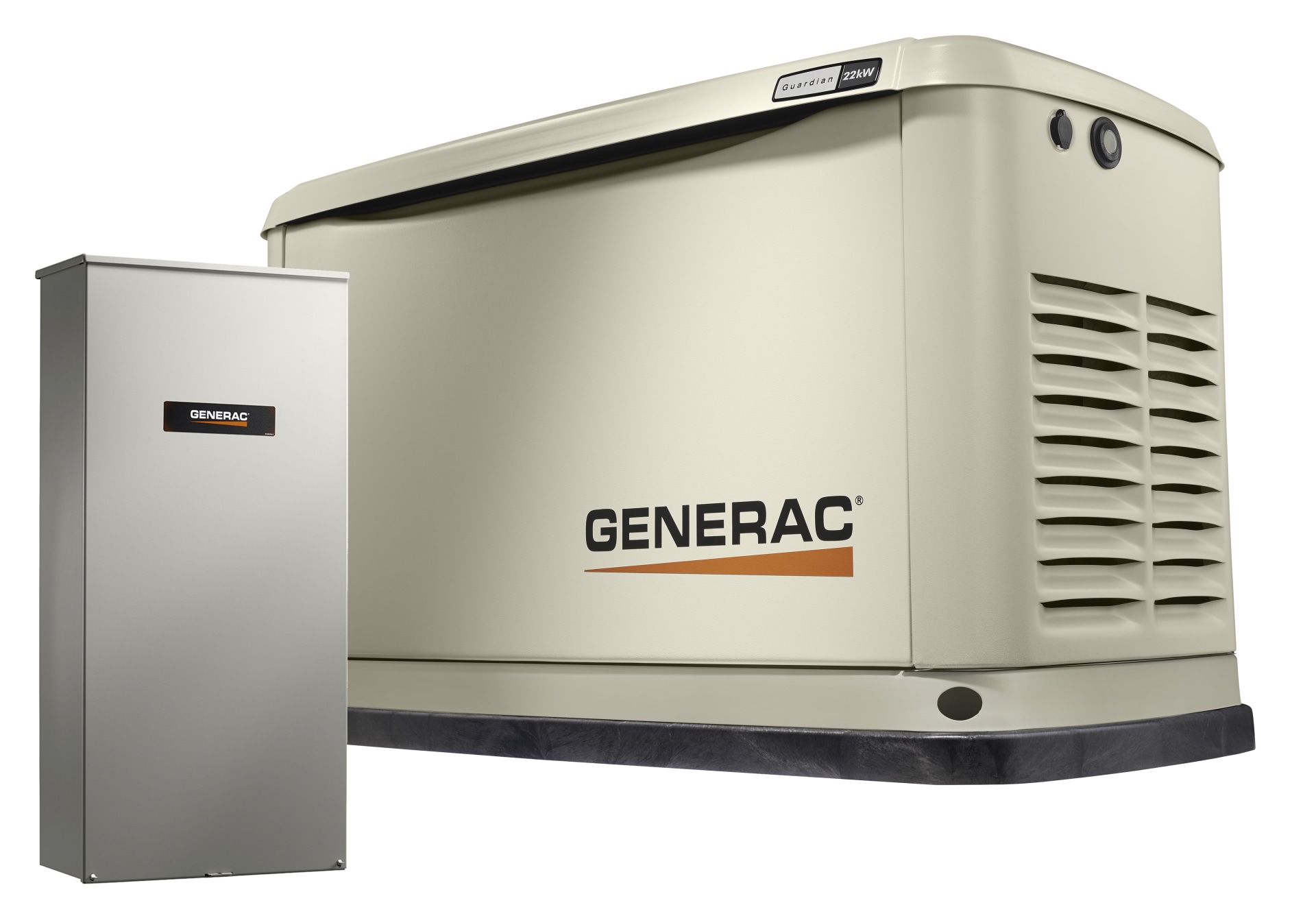
Generac 7043 is a powerful and reliable home standby generator that is perfect for those who need a reliable emergency power supply. This generator has a 22kW output and can power a variety of essential household items, such as lights, fridge, and HVAC systems.
- 22kW output
- Aluminum Enclosure
- 200-Amp Smart Transfer Switch
- True Power Technology
- Mobile Link Remote Monitoring
Generac 7043 is designed to be reliable and easy to install. Its aluminum enclosure helps protect the generator from the elements and its True Power Technology helps reduce harmonic distortion. This generator also comes with a 200 Amp Smart Transfer Switch that allows you to switch easily between the generator and utility power.
Generac 7043 also comes with Mobile Link Remote Monitoring, which allows you to monitor the generator’s performance from anywhere via the internet. This makes it easy to keep an eye on the generator and make sure it’s running optimally.
Overall, Generac 7043 is a powerful, reliable, and easy to install home standby generator that can provide you with the essential power you need during an emergency. It is a great choice for those who want a reliable emergency power supply.
4. Champion 3400-Watt
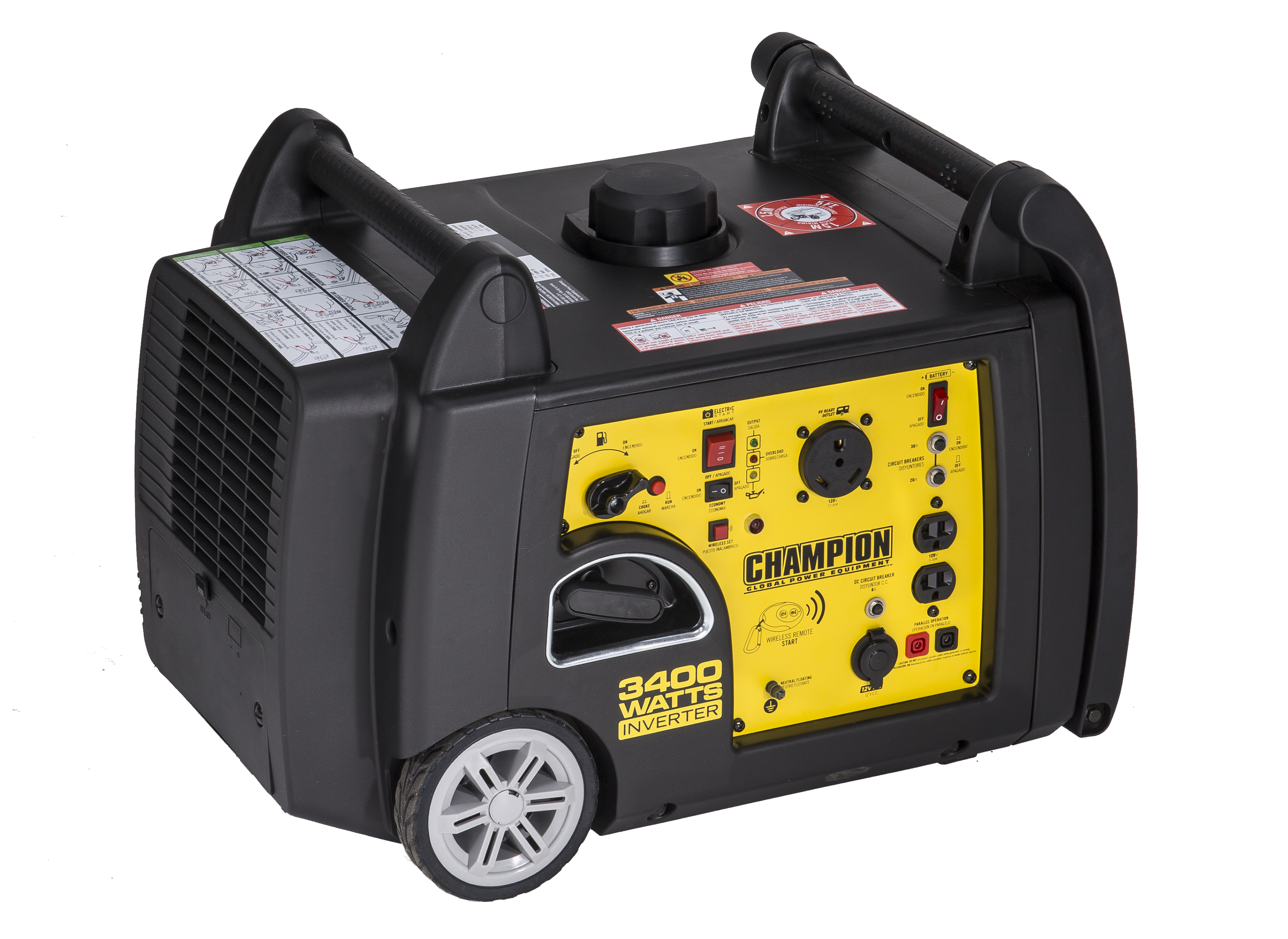
The Champion 3400-Watt generator is a reliable and versatile choice for anyone looking for a powerful generator. With a peak power output of 3400 watts and a running power output of 3100 watts, this generator is suitable for powering a wide range of appliances and tools, including air conditioners, refrigerators, and other large appliances.
The Champion 3400-Watt generator comes with several features that make it a great choice for a variety of uses. It features a dual-fuel system that allows you to switch between gasoline and propane for increased fuel efficiency. It also has a convenient electric start and a low-oil shut-off feature to prevent damage to the engine.
The Champion 3400-Watt generator is also quite portable, with a wheel kit and an integrated handle for easy transport. It also has an economy mode that helps you save fuel and reduce noise. With its low-tone muffler, this generator is also quiet, making it ideal for camping trips and other outdoor activities.
Overall, the Champion 3400-Watt generator is a great option for anyone in need of a reliable and efficient generator. Its dual-fuel system, convenience features, portability and low noise make it a great choice for a variety of needs.
5. Duromax XP12000EH
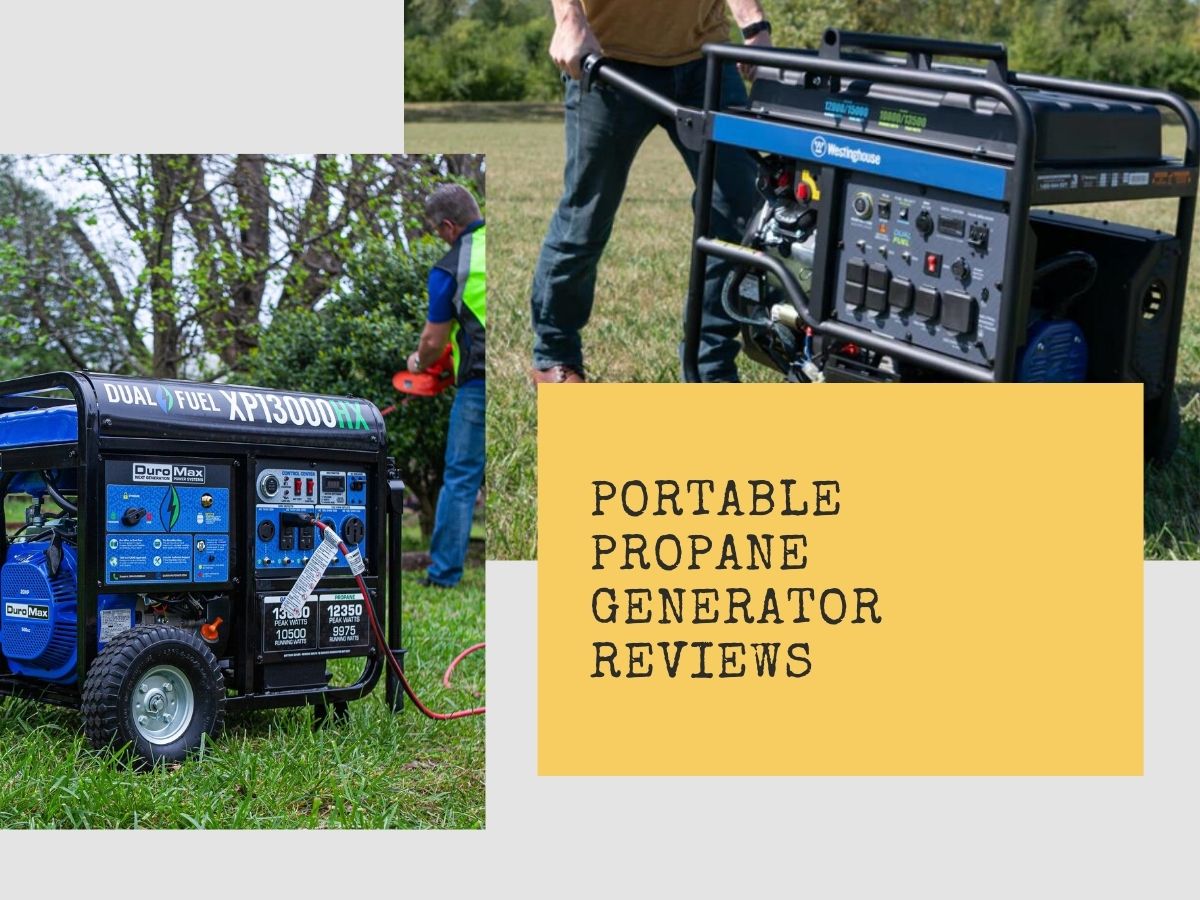
The Duromax XP12000EH is an excellent choice for those looking for a top generator. It features an 18 HP air-cooled engine, which is capable of delivering 12,000 watts of power. The engine has a 4-gallon fuel tank and runs for up to 8 hours on a single tank of gas. It also features an electric starter for easy starting.
The Duromax XP12000EH has an electric outlet panel with two 120V 20A outlets, one 120V/240V 30A outlet, and one 120V/240V 50A outlet. It also has an external voltage regulator for precise voltage control. It has a low-oil shut off system for safety, and an hour meter for tracking run time.
The Duromax XP12000EH is a great choice for those who need a powerful generator that can handle heavy load. It is also easy to use and maintain, and is backed by a two-year limited warranty. In addition, it is CARB and EPA compliant, making it an excellent choice for those looking for a top generator.
How to Install a Generator
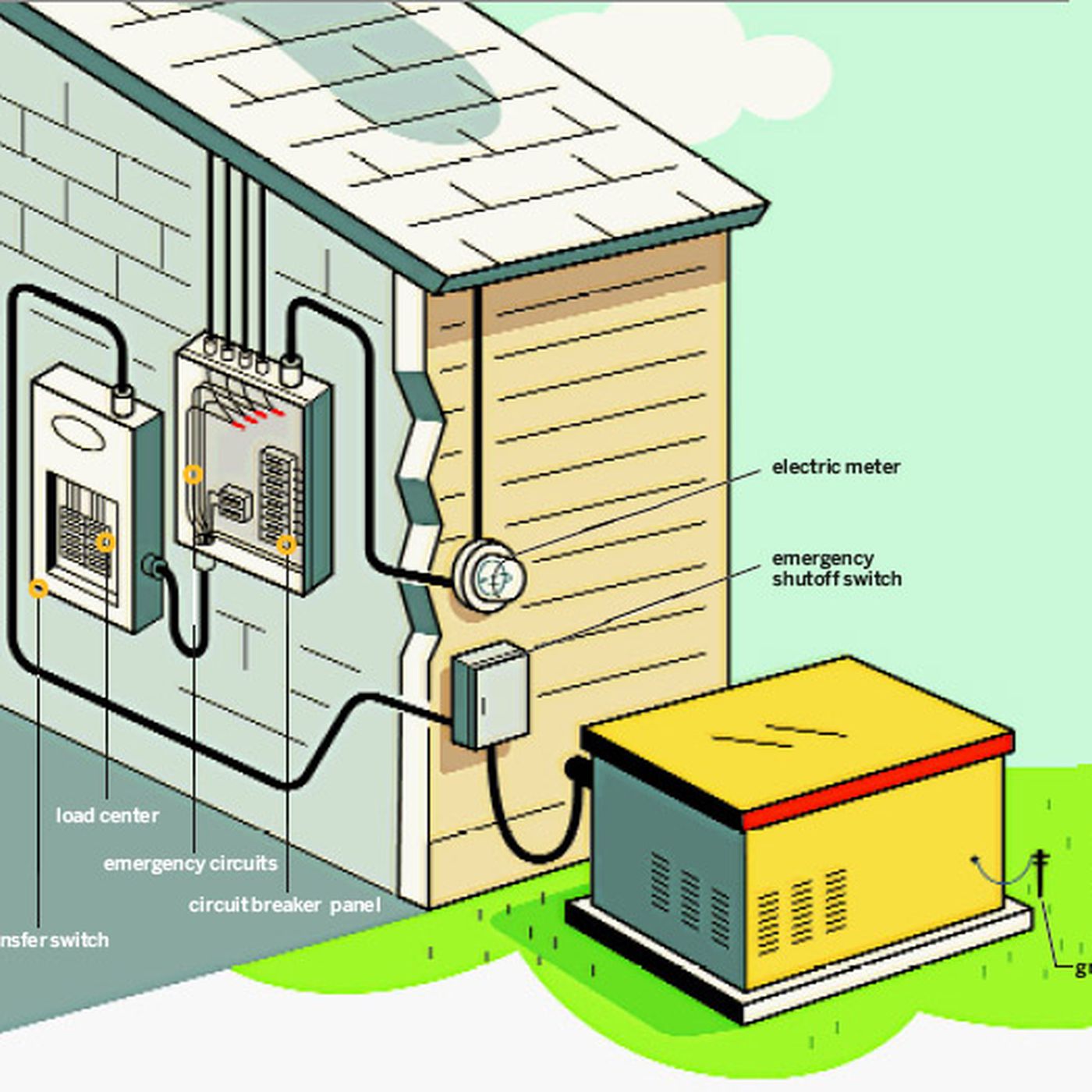
Installing a generator can be a complicated process, so it’s important to make sure you do it correctly. Follow these steps to ensure you have a successful installation:
1. Determine the size and type of generator you need. You will need to consider the wattage of the items you plan to power, the amount of space you have available, and the type of fuel you have available for the generator.
2. Choose the right location for your generator. Make sure the area is well ventilated and away from combustible materials.
3. Gather the necessary materials. This may include a generator, fuel, extension cords, and any other required tools.
4. Connect the generator to the fuel source. This may require connecting the generator directly to a fuel tank or running a fuel line from the tank to the generator.
5. Install the generator. Follow the manufacturer’s instructions for safely and securely mounting the generator.
6. Wire the generator. Follow the manufacturer’s instructions for wiring the generator to the panel and the transfer switch.
7. Test the generator. Test the generator to make sure it is working properly.
8. Maintain the generator. Regularly maintain the generator to ensure it is in top condition and ready to use when needed.
Installing a generator can be complicated and dangerous, so it’s important to take the time to make sure you do it correctly. If you have any questions or concerns, it’s best to consult a professional to ensure the job is done safely and correctly.
1. Step 1 – Choose a Location
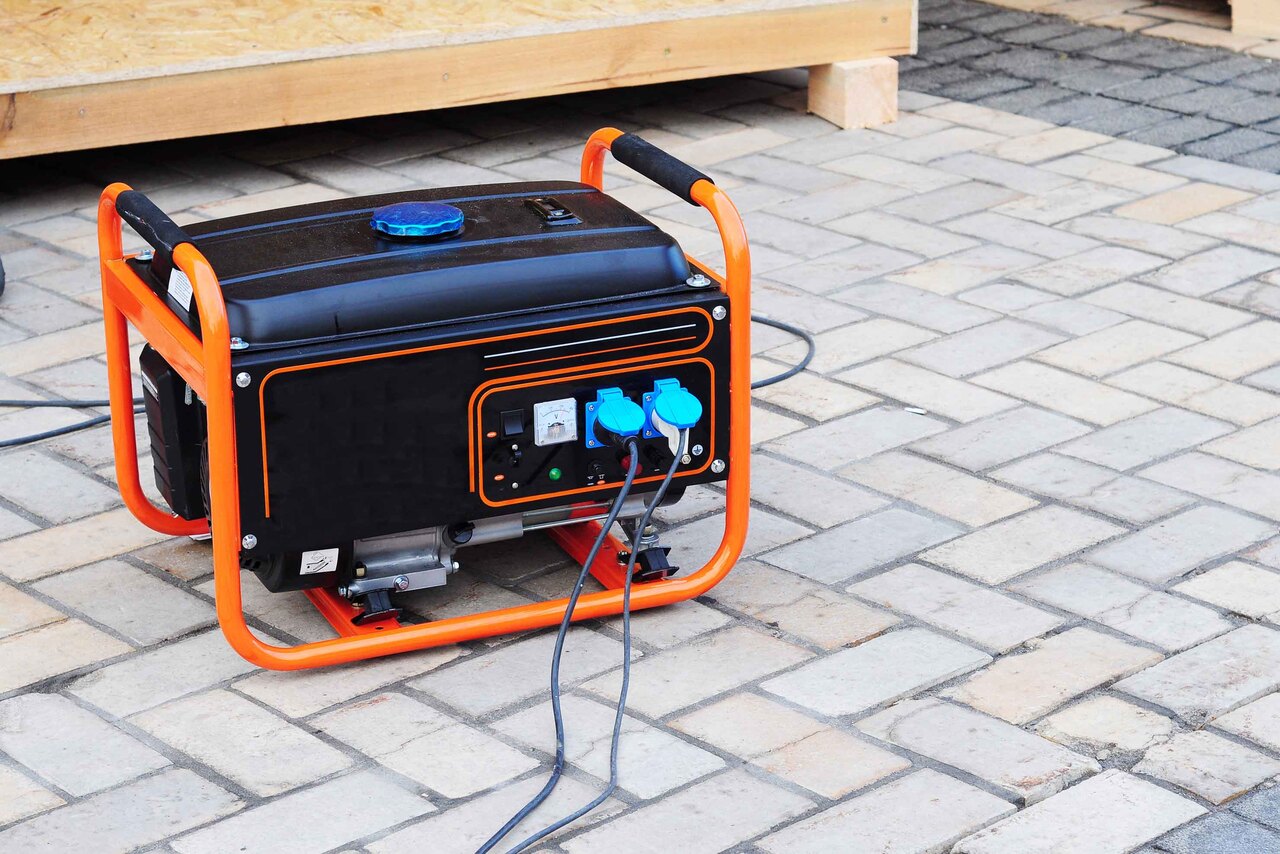
When choosing a location for your generator, it is important to consider the environment in which it will be installed. Factors such as wind, sun, temperature, and humidity can all affect the performance and efficiency of the generator. When selecting a location, it is important to ensure that the generator is protected from the elements and that it has access to adequate ventilation. Additionally, the location should be easily accessible for regular maintenance and repairs.
If the generator is to be placed outdoors, it is important to choose a spot that is sheltered from the wind. If the generator is located in an area that is prone to flooding or extreme weather, it may be necessary to install a raised platform to provide an extra layer of protection. Furthermore, it is important to ensure that the generator is placed in an area that is free of obstructions, such as trees and power lines.
When selecting the correct location for your generator, it is also important to consider the surrounding area. The generator should be placed a safe distance away from any potential hazards, such as fuel tanks, residential buildings, and other sources of combustible material. Additionally, the generator should be placed in an area that is easily accessible for maintenance and repairs.
Choosing the right location for your generator is essential for ensuring its safe and efficient operation. The location should be carefully chosen to ensure that the generator is protected from the elements and is easily accessible for maintenance and repairs. Additionally, the surrounding area should be considered to ensure the safety of the generator and its surroundings.
2. Step 2 – Plan the Wiring
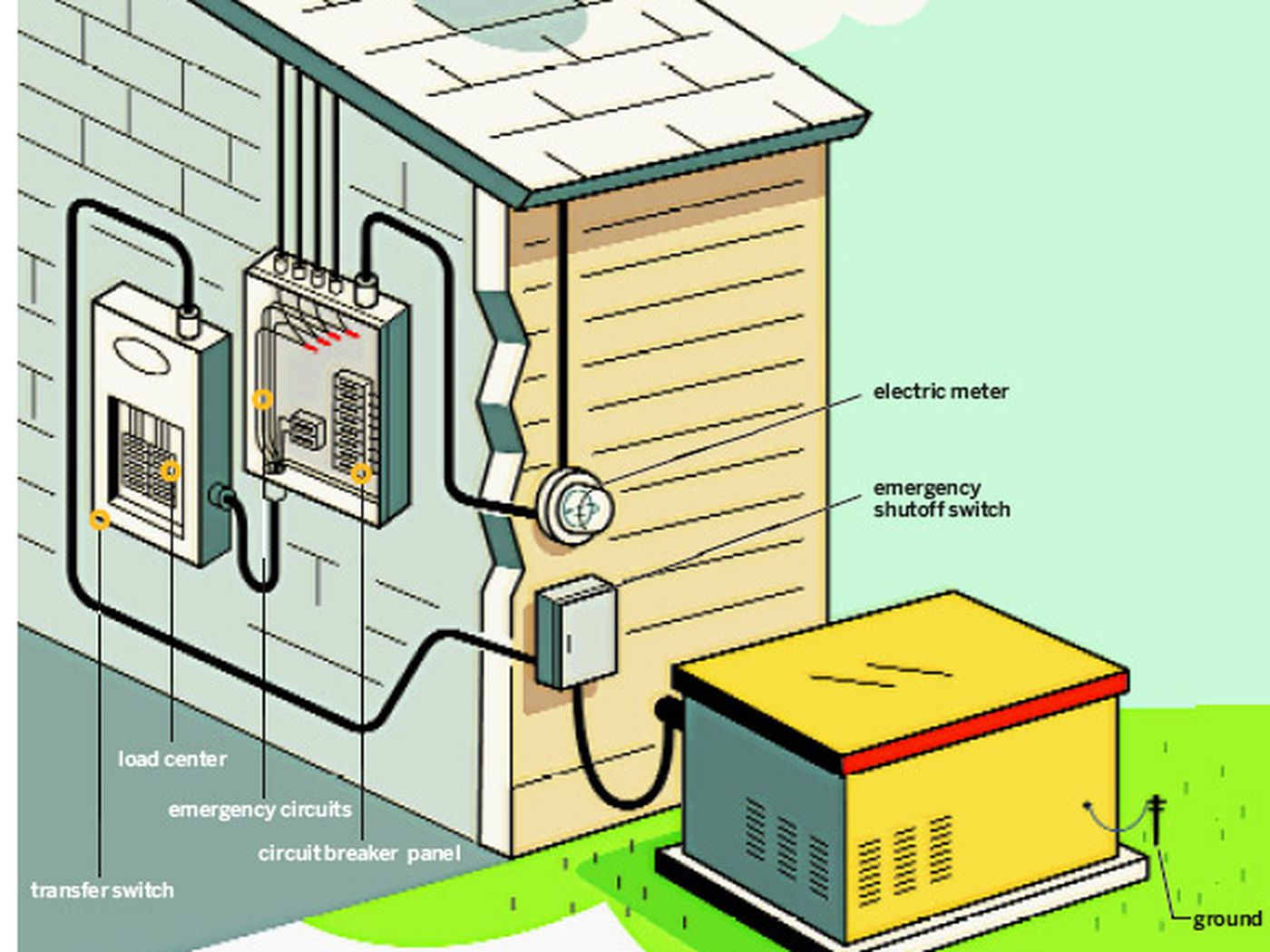
Before starting the wiring, it is important to plan the setup correctly. This will ensure that the generator works as expected and that any potential hazards are avoided. Here are the steps to take when planning the wiring:
- Check the generator’s power output. Make sure that the generator’s power output is adequate for the intended use.
- Check the voltage. Make sure that the voltage of the generator matches the voltage of the appliance or device that will be powered.
- Check the wiring. Make sure that the wiring is in good condition and that all connections are secure.
- Check the circuit breaker. Make sure that the circuit breaker is rated for the appropriate current.
- Check the wiring diagram. Check the wiring diagram for the generator to ensure that all connections are correct.
- Plan the route. Determine the route of the wiring and make sure that it is not obstructed or exposed to any potential hazards.
- Check the grounding. Make sure that the generator is properly grounded to prevent any accidental shocks.
Once all these steps have been completed, you are ready to begin the wiring process.
3. Step 3 – Connect the Generator
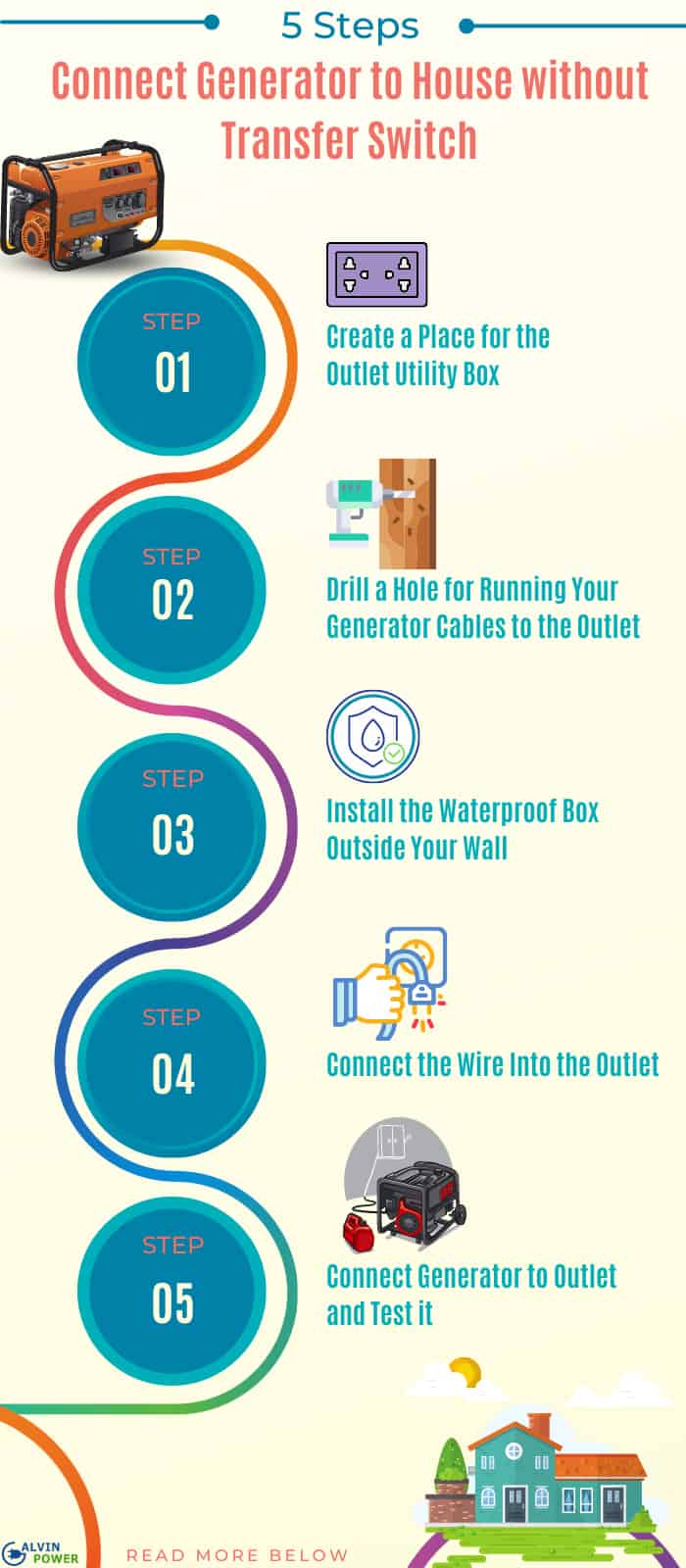
Connecting a generator to your home or office can be an intimidating task, but with a few simple steps, you can have a reliable source of power in no time.
Materials Needed
| Item | Quantity |
|---|---|
| Generator | 1 |
| Extension Cord | 1 |
| Power Transfer Switch | 1 |
| Screwdriver | 1 |
Instructions
- Position the generator outdoors, away from windows and open doors.
- Connect the extension cord from the generator to the power transfer switch. Make sure the cord is secure and properly connected.
- Use the screwdriver to open the power transfer switch. Connect the black, white and green wires to the switch. You may have to use the manual for your specific model.
- Turn the switch on and run the generator to ensure it is working correctly.
By following these steps, you can connect your generator to your home or office in no time. Be sure to read and follow all safety instructions that come with your generator before use.
4. Step 4 – Connect the Transfer Switch

In order to connect your generator to your home electrical system, you will need to install a transfer switch. A transfer switch is a device that is installed between your home’s electrical panel and the generator. It allows you to safely connect the generator to your home’s electrical system without overloading the circuits. Here are the steps for connecting your transfer switch:
- Turn off the main breaker in your home’s electrical panel.
- Connect the power cord from the generator to the transfer switch.
- Connect the transfer switch to your home’s electrical panel.
- Turn on the main breaker in your home’s electrical panel.
Once the transfer switch is connected, you can safely and easily use your generator to power your home. Be sure to follow all safety instructions when connecting the transfer switch, and always consult a professional electrician if you are unsure of how to proceed.
Generator Maintenance

Generator maintenance is an important part of owning and operating a generator. With regular maintenance, your generator will be able to provide reliable power when you need it most. Here are the steps for maintaining your generator:
- Check the oil level and top off with the appropriate type of oil if needed.
- Check the coolant level and add the proper coolant if needed.
- Check the air filter for dirt and debris and replace if needed.
- Check the spark plugs for wear and replace if needed.
- Check the fuel filter for debris and replace if needed.
- Check the fuel lines for leaks and replace if needed.
- Test the generator by running it for a few minutes.
- Check the generator’s voltage output to ensure it is within the proper range.
By following these maintenance steps regularly, you can ensure your generator will be ready to perform when needed.
1. Regular Maintenance
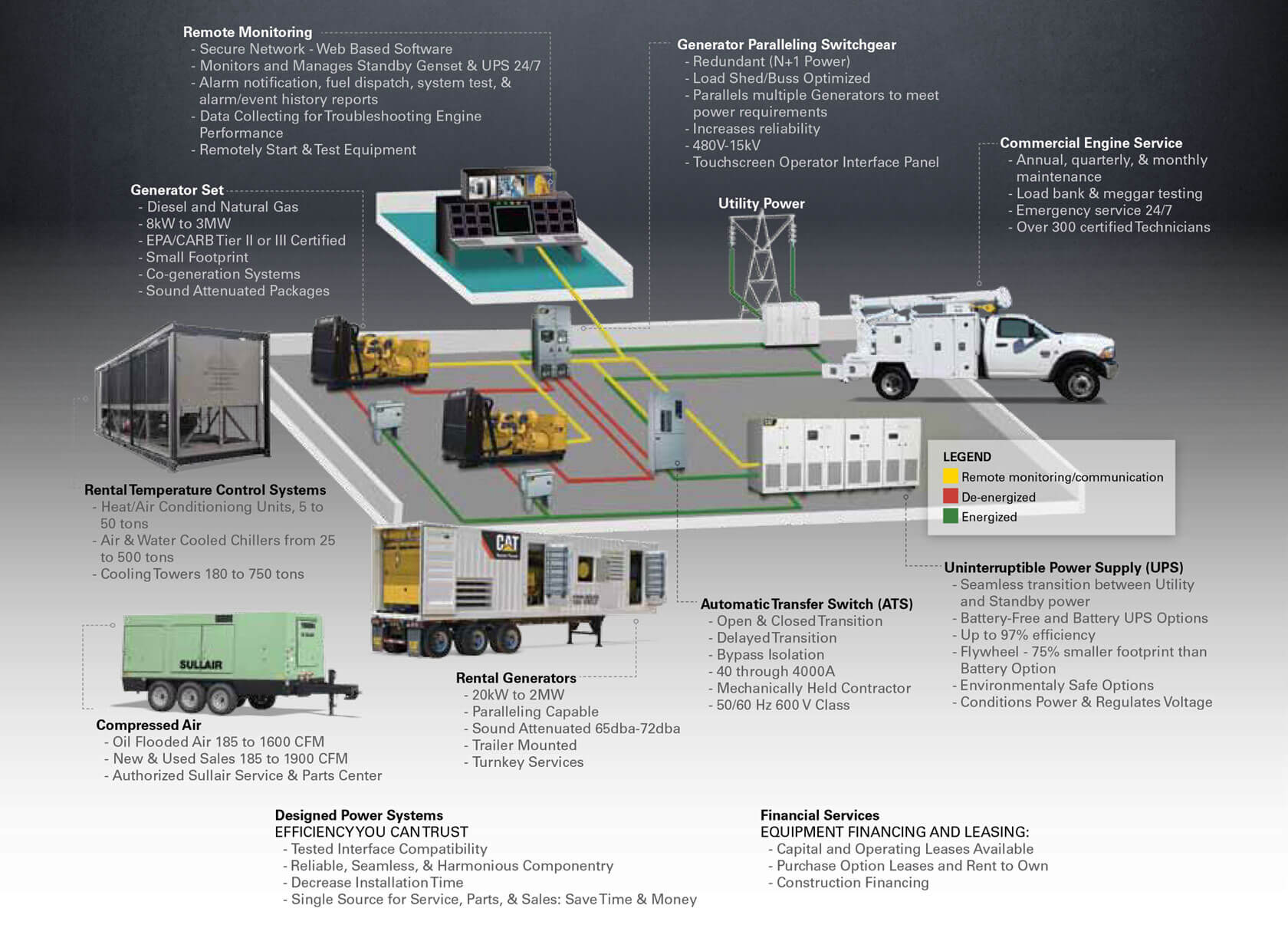
Generators are a great source of power for any business or home. To ensure your generator runs smoothly and efficiently, regular maintenance is key. Here are some tips for regular maintenance of your generator:
- Inspect the generator for signs of wear or damage, such as loose wires, discoloration, or rust.
- Check the oil levels in the generator and add fresh oil if needed.
- Check the coolant levels and replenish as needed.
- Inspect the air filter and clean or replace if necessary.
- Check the fuel lines and fuel filter for any signs of damage or wear.
- Check the spark plugs and replace as necessary.
- Test the generator to make sure it is working properly.
By following these steps, you can ensure that your generator runs smoothly and efficiently. Regular maintenance can also help identify any potential problems with your generator before they become more serious.
2. Troubleshooting
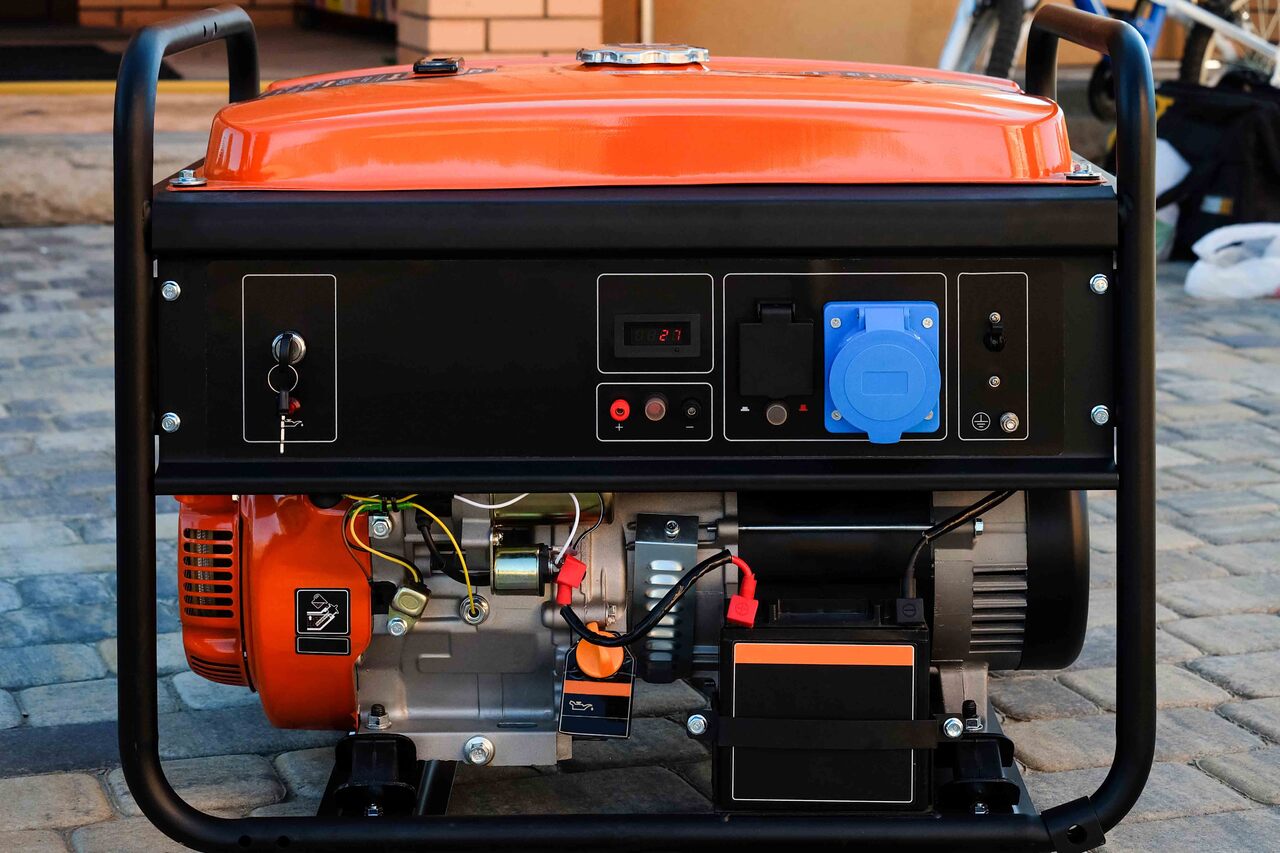
Troubleshooting is an important part of owning and operating a generator. Generators are not infallible and can become damaged, malfunction, or need to be adjusted for proper operation. Here are some common issues and how to troubleshoot them:
- No Power: If your generator is not producing any power, make sure that it is properly connected to a power source and that the fuel tank is full. If it is, check the circuit breaker panel to ensure that the circuit is not tripped. If it is, reset it and try again. If the problem persists, you may need to take the generator to a qualified technician for service.
- Stalling: If your generator is stalling out, check the fuel tank to make sure it is full. If it is, check the air filter to make sure it is clean and not clogged. If it is, replace it. If the problem persists, you may need to take the generator to a qualified technician for service.
- Surging: If your generator is surging, check the voltage regulator to make sure it is set correctly. If it is, replace the spark plugs. If the problem persists, you may need to take the generator to a qualified technician for service.
- Noise: If your generator is making an unusual noise, check the exhaust pipe to make sure it is not blocked. If it is, clear any blockages. If the problem persists, you may need to take the generator to a qualified technician for service.
Remember, always read and follow all safety instructions when troubleshooting your generator. If you are unsure of any steps, contact a qualified technician for assistance.
Safety Tips
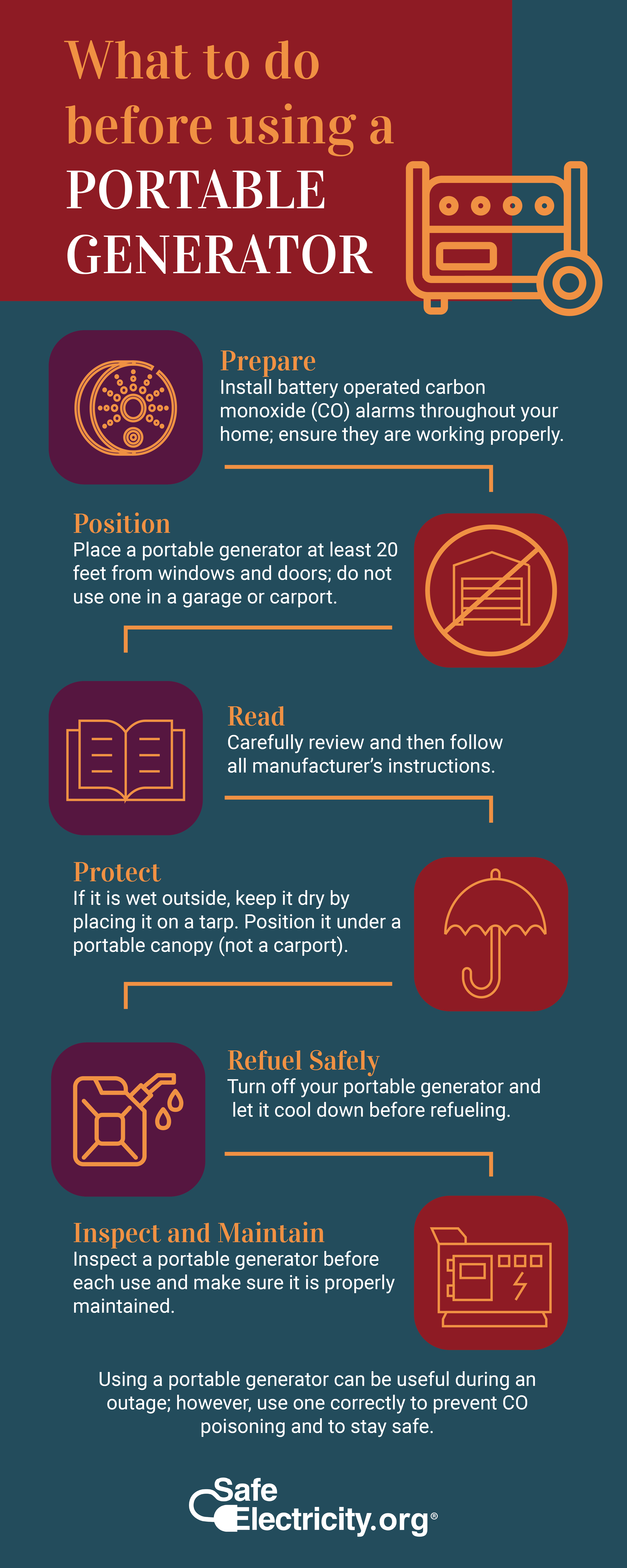
- Read and follow the manufacturer’s operating instructions.
- Never leave a running generator unattended.
- Do not refuel a hot generator, allow it to cool down first.
- Keep the generator at least 10 feet away from your home.
- Keep the generator dry and use it in a well-ventilated area.
- Do not overload the generator.
- Do not use an extension cord to connect a generator to your home electrical system.
- Make sure the generator is properly grounded.
- Inspect the generator regularly for fuel leaks, frayed cables, and other signs of wear.
- Never store fuel near the generator.
- Always disconnect the generator before performing maintenance.
1. Carbon Monoxide Poisoning

Carbon Monoxide (CO) poisoning is a serious risk associated with the use of generators, particularly those that are powered by gasoline, diesel, or propane. CO is an odorless, colorless gas that can be deadly if inhaled in large amounts. Generators produce CO as a byproduct of combustion, and while most modern units are equipped with safety features such as an automatic shutoff to prevent dangerous levels of CO from building up, these features may not be enough to protect users from the risk of poisoning.
To prevent CO poisoning, it is important to follow all instructions provided by the manufacturer and to regularly inspect the generator for any signs of damage or wear that could affect its performance. Additionally, it is important to keep the generator at least 20 feet away from any open windows, doors, or other areas that could allow CO to enter the home. Additionally, CO detectors should be placed both inside and outside of the home to provide an early warning of dangerous levels of CO.
Finally, it is important to never use a generator indoors, as this is the most common cause of CO poisoning. Generators should always be used in a well-ventilated area, such as a shed or garage, away from any living space. Additionally, it is important to be aware of the symptoms of CO poisoning, which can include dizziness, nausea, headache, and confusion. If these symptoms are noticed, the generator should be shut off immediately and the area should be evacuated.
2. Electrical Safety
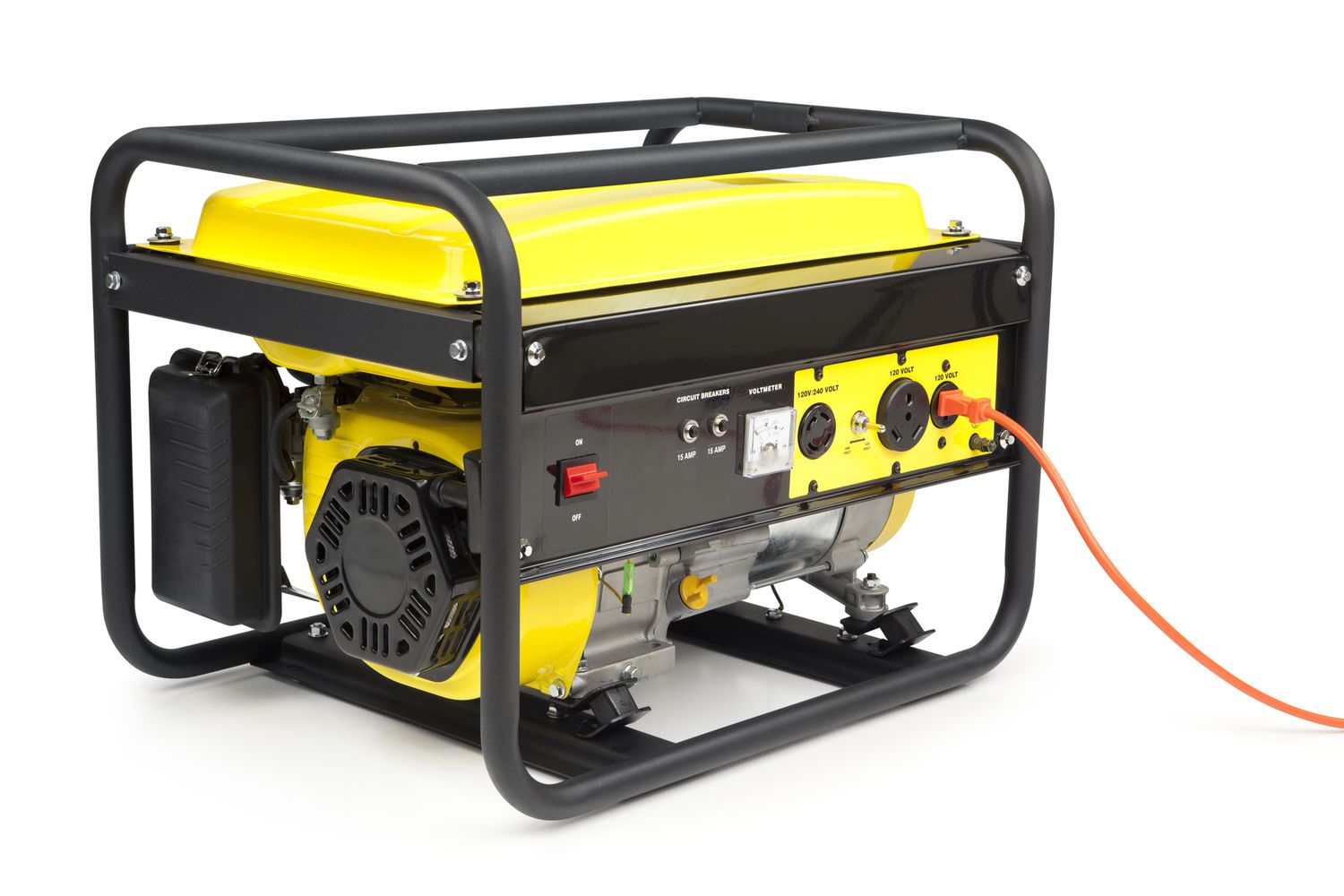
Generators are a great way to provide power during outages, but they must be used with caution. Electrical safety is of utmost importance when dealing with generators. Generators should always be used in a well-ventilated area and should never be used indoors or in a closed area. Generators should also be used with a transfer switch and/or GFCI outlets to ensure that the electricity generated is not fed back into the utility lines. In addition, generator wires should be covered with conduit or wire mesh to protect them from the elements and any potential damage. Lastly, all connections should be made with quality wiring to prevent any potential shorts or fires.
Pros and Cons of Generators
Generators are a great way to provide a reliable source of electricity in a variety of situations. But, like any other power source, they come with their own set of pros and cons. Before making a purchase, it is important to consider both the advantages and disadvantages of generators.
Pros:
- Generators are a reliable source of electricity in emergency situations or when power outages occur.
- Generators are typically easy to use and maintain.
- They can power a variety of appliances, including refrigerators, heaters, stoves, and more.
- Generators are relatively quiet, so they won’t disrupt your neighbors.
Cons:
- Generators are expensive to purchase and maintain.
- They require regular maintenance and servicing in order to keep them running properly.
- Generators can be dangerous if not used correctly, so proper safety measures must be taken when using them.
- Generators produce fumes, so be sure to use them in a well-ventilated area.
Frequently Asked Questions
1. What is the best generator for home use?
Generators are a great way to provide backup power to your home in the case of a natural disaster or power outage. However, with so many types of generators on the market, it’s hard to know which one is best for your home. Here is a list of the top generators for home use.
- Portable Generator: Portable generators are great for occasional use and can be easily moved around. They are typically powered by gasoline and can provide power for appliances, tools, and lights. They range in size from small, lightweight models that can be carried by hand, to larger, wheeled models that can power an entire home.
- Standby Generator: Standby generators are a great option for homes that need to power multiple circuits. They are permanently installed outside the home, and they turn on automatically when the power goes out. Standby generators come in a variety of sizes, and they run on natural gas, propane, or diesel. They are more expensive than portable generators, but they last longer and provide more power.
- Solar Generator: Solar generators are a great option for those who want to go green. They run on solar energy, which is widely available and free. Solar generators are silent and don’t require refueling, making them a great long-term option. They are also very portable and can be used during outdoor activities like camping or tailgating.
- Inverter Generator: Inverter generators are the best choice for those who need a quiet and efficient generator. They are smaller and lighter than standard generators, and they produce clean power that is safe for sensitive electronics. They also have a longer run time than other types of generators and are more fuel-efficient.
Overall, the best generator for home use depends on your needs and budget. Portable generators are great for occasional use, standby generators are perfect for larger homes, solar generators are perfect for those who want to go green, and inverter generators are ideal for those who need a quiet and efficient generator.
2. What is the Best Generator to Buy?
Choosing the best generator depends on a few factors, such as your budget, the type of power needed, and the size of the generator. Here is a list of some of the top generators available:
- Honda EU2200i – This powerful and reliable inverter generator is one of the top choices for portability and durability. It can produce up to 2,200 watts of power, making it great for camping, tailgating, or home use.
- Westinghouse WGen7500 – This generator is great for powering major appliances, as it produces up to 7,500 watts of power. It also features a low-oil shutdown and an automatic voltage regulator.
- Champion 3400-Watt – This generator is one of the most durable and reliable on the market, and it produces up to 3400 watts of power. It also features a low-oil shutdown and an electric start.
- DuroMax XP12000E – This generator is perfect for larger applications, as it produces up to 12,000 watts of power. It also features an electric start, a low-oil shutdown, and a voltage regulator.
Ultimately, the best generator for you depends on your needs and budget. Consider the type of power you need, the size of the generator, and the features you want before making your decision.
3. What is the best portable generator for home?
With a portable generator, you can have the power you need when the electricity goes out at home. Portable generators come in a variety of sizes and power capacities and can provide you with the necessary power for appliances, tools, and even air conditioning. So, what is the best portable generator for home?
- Honda EU2200i Generator – This generator is compact, lightweight and reliable. It is the perfect generator for home use and provides 2200 watts of power. It is also fuel-efficient, so you don’t have to worry about running out of fuel quickly.
- Champion 3400-watt Generator – This is a great generator for home use as it provides 3400 watts of power. It is also relatively quiet and has a low-oil shut-off feature, so you don’t have to worry about it running out of oil.
- Yamaha EF2200iS Generator – This generator provides 2200 watts of power and is fuel-efficient. It is also lightweight, so it is easy to move around. It also has an electric start, so it is easy to get it started quickly.
- Westinghouse WH2200iXLT Generator – This generator is perfect for home use as it provides 2200 watts of power. It is also quiet and fuel-efficient, so you don’t have to worry about running out of fuel quickly. It also has a low oil shut-off feature, so you don’t have to worry about it running out of oil.
Ultimately, the best portable generator for home use depends on your needs and budget. All of these generators provide reliable power and are great options for home use. Be sure to choose the generator that best fits your needs and budget.
4. What is the most reliable portable generator?
Portable generators are a great way to keep your home and small businesses powered during power outages and other unexpected events. But how do you know which one is the most reliable?
Here are some of the key factors to consider when selecting the most reliable portable generator:
- Engine quality: A good engine is essential for reliable power generation. Look for engines with a long history of proven performance and a good reputation.
- Durability: Portable generators need to be able to withstand rough handling and harsh weather conditions. Look for generators with corrosion-resistant materials and reinforced structures.
- Fuel efficiency: You want to get the most out of your fuel and ensure the generator runs for the longest possible time. Look for generators with fuel-saving features like auto-idle control and low-oil shutdown.
- Noise level: You don’t want your generator to be too loud and disturb your neighbours. Look for generators with noise reducing features, like sound-dampening enclosures and low-speed operation.
- Service and support: You want a generator that’s backed by good customer service and technical support. Look for manufacturers with a history of good customer service and a wide network of service centres.
By considering these key factors, you’ll be able to find a portable generator that is reliable, fuel-efficient, and easy to maintain.
5. What is the best portable generator for whole house?
A portable generator is a great choice for providing a whole house with backup power during outages. While the size of generator you will need will depend on your power needs, the following are some of the best portable generators for whole house use:
- Generac 6866 iQ2000 – This inverter generator is lightweight, quiet, and fuel efficient. It can provide up to 2000 running watts and is ideal for powering everyday essentials during an outage.
- Honda EU2200i – This portable generator is one of the most popular options on the market and is very reliable. It provides up to 2200 watts of power and is exceptionally quiet.
- Westinghouse WGen7500 – This generator has a 7500 watt peak/6750 watt running capacity, making it ideal for large homes. It features an electric start, an intuitive control panel and USB outlets.
- Champion 100302 – This generator has a peak output of 9375 watts and a running output of 7500 watts. It has an electric start and is surprisingly quiet.
- DuroMax XP12000EH – This generator has a 12000 watt peak and 9500 watt running capacity. It also comes with a wheel kit and is a great choice for larger homes.
Conclusion
When choosing a generator, it is important to look at all the features, read reviews, and understand how to use and maintain the device. Some features to consider include type of fuel, size, power, noise level, portability, durability, cost, and warranty. Before you purchase a generator, it is important to research the different types and identify the one that best fits your needs. By understanding the different types of generators and their uses, you can determine which generator is best for your particular situation. Once you have chosen the best generator for your needs, you can enjoy the convenience and peace of mind that comes with knowing that you are prepared for any power outages or emergencies.
References
- American Red Cross. 2020. Generators: A Guide to Portable and Standby Generators. Accessed May 28, 2020. https://www.redcross.org/get-help/how-to-prepare-for-emergencies/types-of-emergencies/power-outage/generators.html.
- Consumer Reports. 2020. Portable Generator Reviews. Accessed May 28, 2020. https://www.consumerreports.org/products/portable-generators/.
- Department of Energy. 2019. Buying and Using a Portable Generator: A Guide for Consumers. Accessed May 28, 2020. https://www.energy.gov/sites/prod/files/2019/02/f59/portable_generators.pdf.
- Generac. 2020. Portable Generator Buyer’s Guide. Accessed May 28, 2020. https://www.generac.com/sites/default/files/literature/Portable_Generator_Buyer_Guide.pdf.
- Lutron Electronics. 2020. Portable Generator Safety. Accessed May 28, 2020. https://www.lutron.com/TechnicalDocumentLibrary/Portable_Generator_Safety.pdf.
- The Home Depot. 2020. Portable Generator Buying Guide. Accessed May 28, 2020. https://www.homedepot.com/c/buying_guide_portable_generators.
